Sustainability and the Shadow of Greenwashing
How businesses and individuals are navigating climate responsibility in Alamance County.

In a world where climate change seems to be discussed frequently, it seems as though the responsibility to ensure the future of the planet is now up to the individual and business. The main focus for many is on the local level and how to minimize the negative impacts businesses have done and are continuing to do, especially in Alamance Count which has been negatively affected by manufacturing industries, such as the Haw River which has had traces of PFAS in the water.
Although environmentally friendly initiatives have been around for a couple years now, we are only now seeing how it is impacting the environment, both positively and negatively. This has led to many questioning what we need to do to ensure that green initiatives are the most effective and sustainable.
Pew Research Center reported in a 2023 study that around 61% of Americans polled believe that climate change is impacting their local community, although only 37% say that it should be the top issue being addressed by the government.
As noted by Matthew Flacksenburg, a sustainability intern at Elon University, there has been an uptick in ethical consumerism, which has played a key role in how products are being marketed and produced.
“As people are becoming more aware of climate change and sort of the dangers of environmental disaster, they're going to be more conscious of where they're spending their money,” Flacksenburg said. “And obviously, businesses are going to want to cash in on that.”
Kelly Harer, associate director of sustainability for education and outreach at Elon University’s Office of Sustainability, points out that although the latest eco-trend may be seen as more sustainable and environmentally friendly, that may not actually be the case.
“It might be eco, but it might not be and there's no regulations around that,” Harer said.
The Federal Trade Commission issued a green guide to businesses that helps to give guidance on how businesses can market their products and how consumers will receive more green-facing products. This, however, is not an enforceable law and businesses can take the guidance or develop their own system.

Sustainability is “meeting the needs of the present without compromising the ability of future generations to meet their own needs.”

For the most part, businesses are in charge of their own sustainable models that not only impacts one person, but many — including the surrounding communities.
Eric Henry, president and CEO of TS Designs, a local sustainable T-shirt manufacturer in Burlington, emphasizes the importance of companies to be aware of their influence on the environment and how they can take steps to minimize the negative impacts.
Henry said though businesses can follow guidelines, it is asking the hard and uncomfortable questions that will help propel any business in their pursuit to being more environmentally sustainable. TS Design itself follows the B certification process when ensuring their products are eco-friendly, but is also aware of other ways it can help lessen its impact.
“If I consume all the resources myself during my lifetime, then that's not sustainable, because you don't have an opportunity,” Henry said. “How do we maintain [business] and still have a good quality life, happiness, opportunities, and things like that? But again understanding the impact? And how do we preserve that for future generations?”
In the Pew poll, around two-thirds of Americans or 67% said that businesses and corporations are not doing enough on their part to reduce their personal impact on climate change.
As shown above, CDP Worldwide reports that many companies do not follow all of the 21 key indicators set forth that help to guide any credible climate transition plan for businesses and organizations. The key indicators themselves are split into nine categories. These include governance, scenario analysis, financial planning, value chain engagement and low carbon initiatives, policy engagement, strategy, risks and opportunities, targets and scope 1,2,3 accounting with verification.
The report saw that of the 18,600 plus organizations audited, only 0.4% of those sampled reported following all 21 of the indicators and most fall into the category of following seven or fewer at 60%.

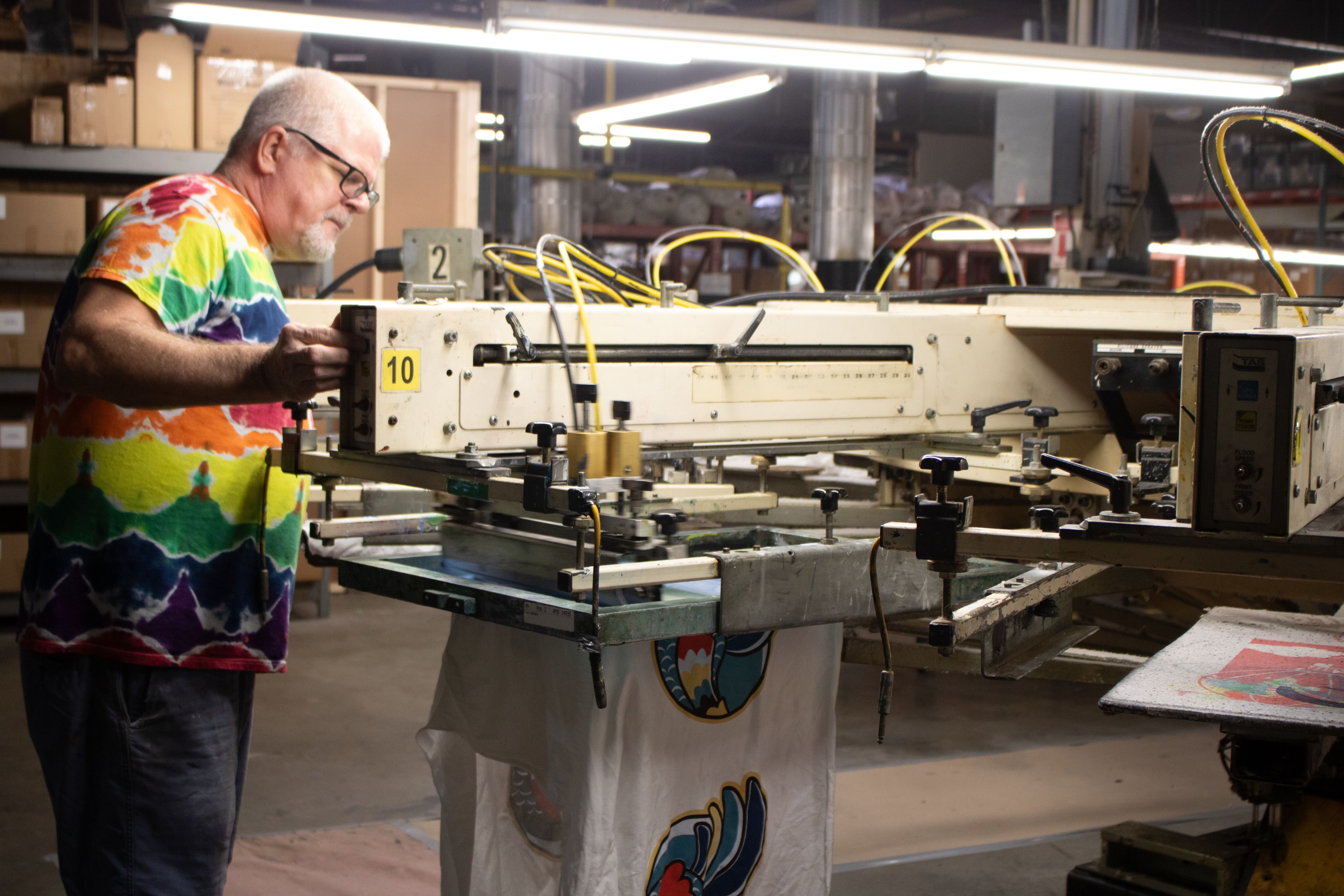
TS Designs Floor Manager, Doug Murphy, screen printing shirts at the TS Designs manufacturing warehouse.
TS Designs Floor Manager, Doug Murphy, screen printing shirts at the TS Designs manufacturing warehouse.
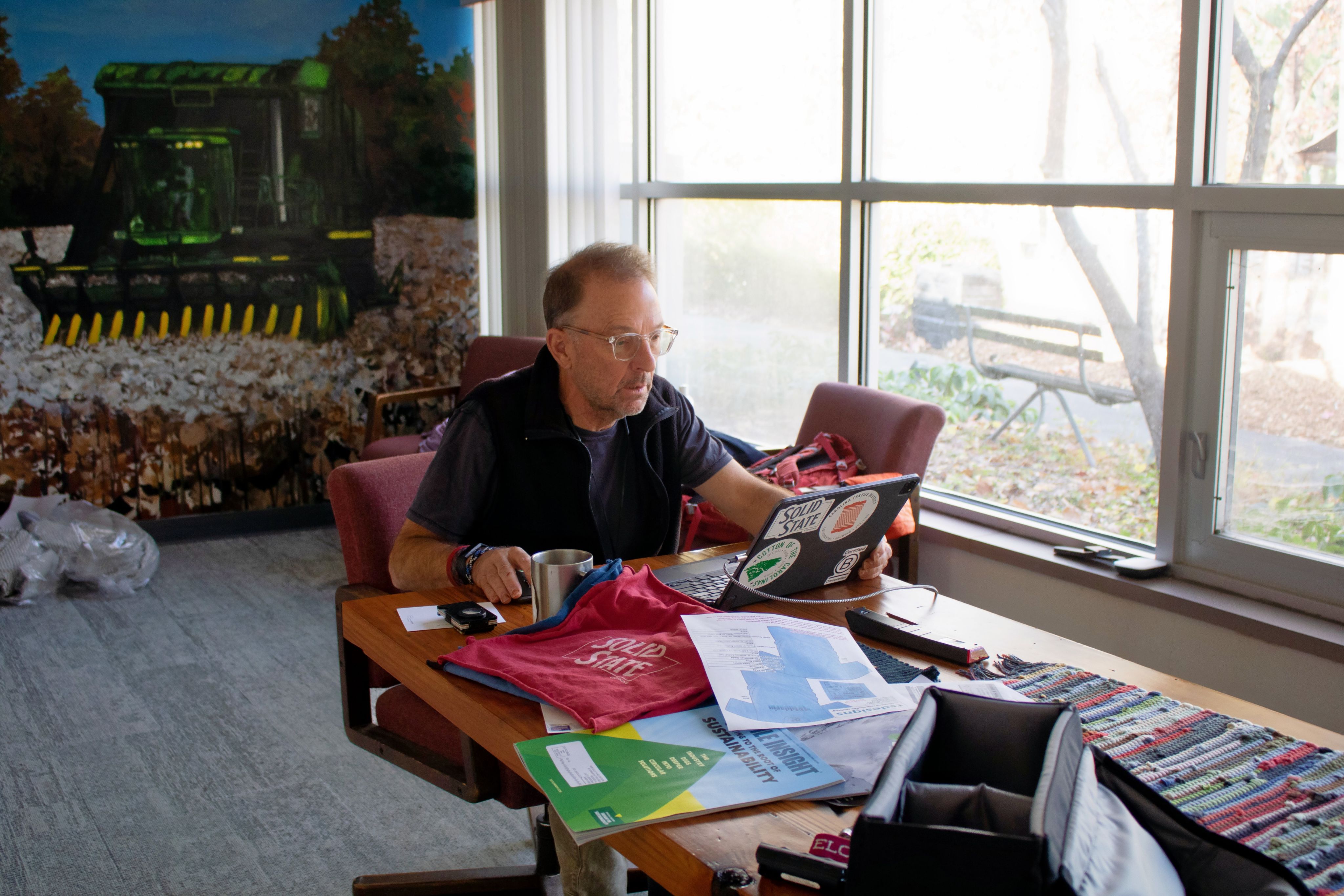
President & CEO of TS Designs, Eric Henry, working in his makeshift office at TS Designs.
President & CEO of TS Designs, Eric Henry, working in his makeshift office at TS Designs.
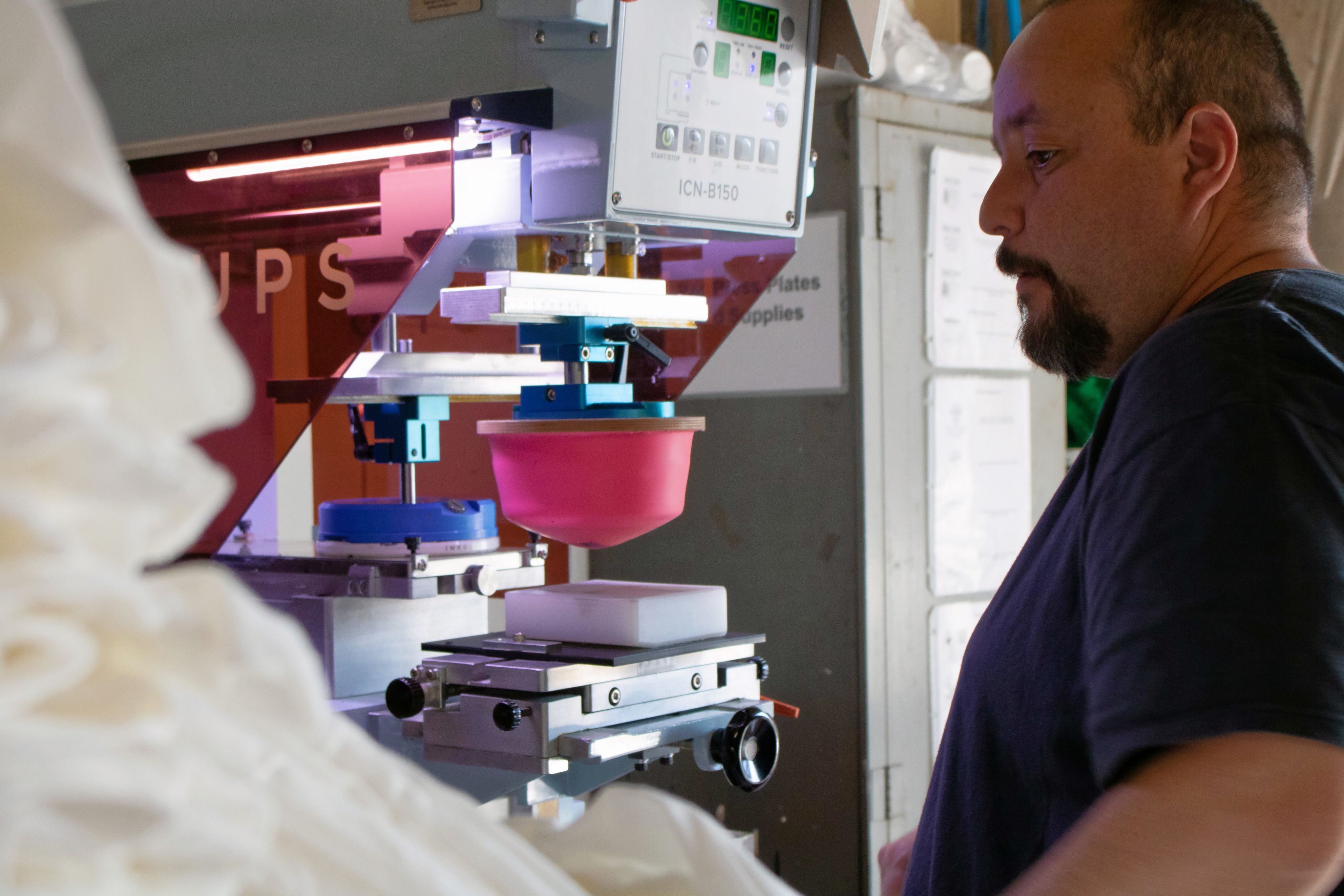
TS Designs Screen Print Operator, Mark Rameriz, printing out t-shirt size labels at the TS Designs manufacturing warehouse.
TS Designs Screen Print Operator, Mark Rameriz, printing out t-shirt size labels at the TS Designs manufacturing warehouse.
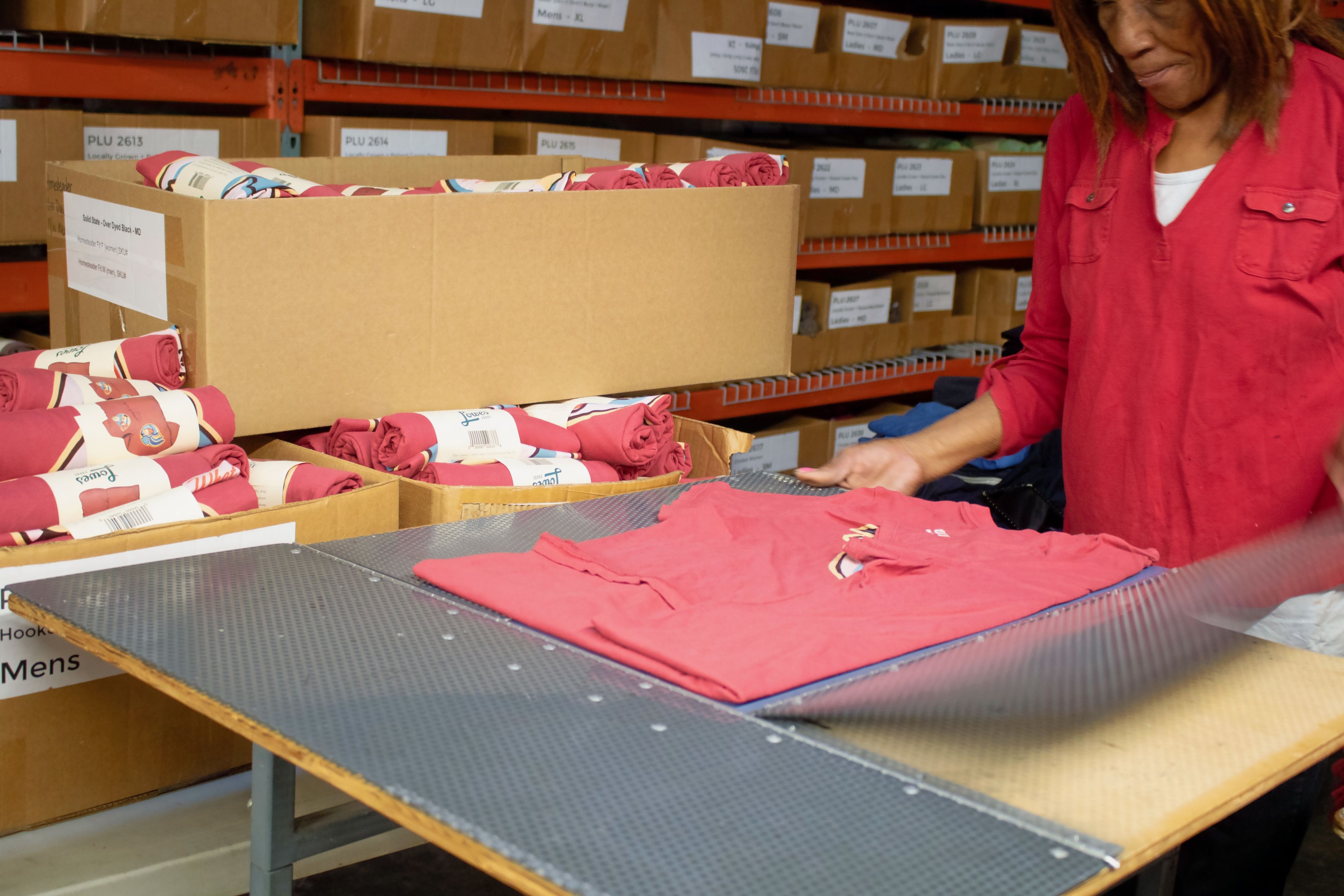
TS Designs worker preparing shirts to send to Lowes Food at the TS Designs manufacturing warehouse.
TS Designs worker preparing shirts to send to Lowes Food at the TS Designs manufacturing warehouse.
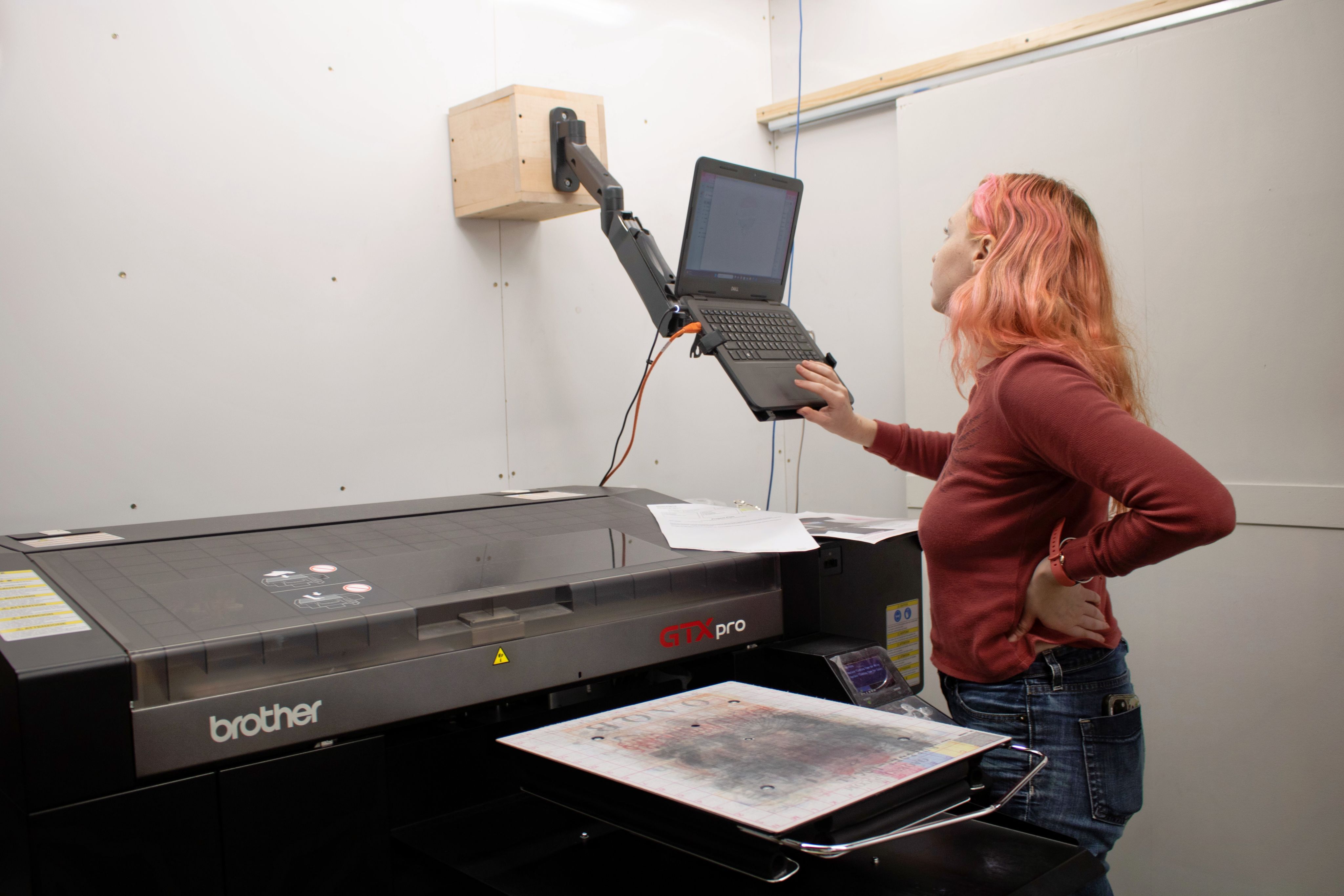
DTG Director & Marketing for TS Designs, Emily Stasiak, works on the design of the t-shirts at the TS Designs manufacturing warehouse.
DTG Director & Marketing for TS Designs, Emily Stasiak, works on the design of the t-shirts at the TS Designs manufacturing warehouse.
The key indicators are split into nine categories. These include governance, scenario analysis, financial planning, value chain engagement and low carbon initiatives, policy engagement, strategy, risks and opportunities, targets and scope 1,2,3 accounting with verification.
One way TS Designs ensures that their manufacturing process is transparent and ensures people know exactly what is being produced and how sustainable it is, is through the website whereyourclothing.com.
Whereyourclothing.com allows for users to contact each business or person in the manufacturing process and allows for an open dialogue on how businesses are trying to minimize their negative impact on the community around them.
When shopping in the local grocery shop or a department store, shoppers can easily stumble upon multiple products that have some sort of design to signal the product is more green. Pairing the green packaging with a low and easily affordable price, it is a no brainer to buy that product compared to another product that is not marketed as sustainable and green.
A common belief held by both Flacksenburg and Henry is that although products promote sustainability and are cheap, the cost is being pushed onto others such as where the products are being manufactured.
“We're dumping this on the people,” Henry said. “When you basically have clothes made in sweatshops in these developing countries and don’t pay people a living wage — you're cheating the system for cost.”
TS Designs may be higher in cost compared to other shirt manufacturers, but to be more sustainable, but Henry said businesses cannot wholly focus on the profit.
“We look at the triple bottom line: People. Planet. Profit,” he said.
According to Worldbank.org, on average the fashion industry is responsible for 10% of the global carbon emissions each year and produces over 20% of the world’s waste water.
One way TS Designs combats this is through a more seamless dying process. As explained by Emily Stasiak, Director & Marketing for TS Designs, who is photographed above, initially, each shirt will have the base color of white and will have the designs available printed out before the dying process. Then, depending on the demand, the shirt will be dyed a certain color and will have a film placed on top of the design so that it is not taken off in the dying process. Due to this system, it helps to reduce how much waste is being produced.

Henry believes that to be able to achieve a sustainable environment where everyone can benefit, the change is not going to be from those most affected by it, but from those in affluent positions and the businesses themselves.
“We’re businesses because we understand that carbon is impacting an environment that's generated by man, then we need to basically start being responsible.” Henry said. “I don't care about small or large businesses.”
Flacksenburg points out that we need to have realistic expectations when speaking on sustainability.
“At the end of the day, every business is going to have to contribute some sort of environmental damage,” Flacksenburg said. “So the only thing that we can really ask of businesses is to be mindful of the emissions that they're creating and put forth a plan to do better.”
Henry acknowledges that in any business, the system is not always perfect.
“We're not 100% sustainable and will never be 100% sustainable,” Henry said. “The world's not perfect, you have to make choices.”
Harer shares that the key to being sustainable is to be imperfect in your approach and to not get hung up on following the steps laid out by others in the past.
“The goal is really to be thinking about your impact and where are you able to actually make changes that still promote good health and well-being and still promote you being able to thrive as a human being.” She said.

